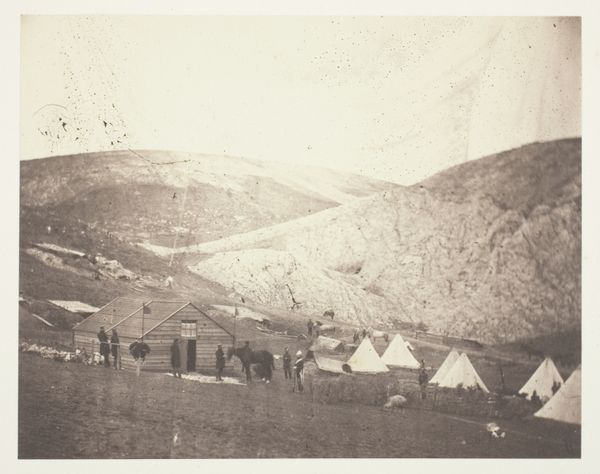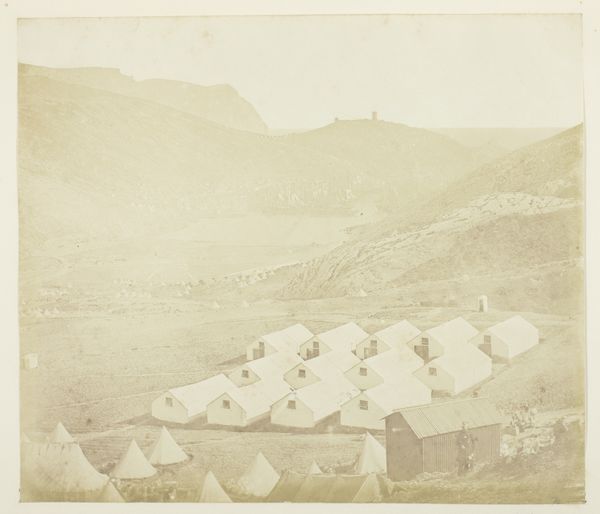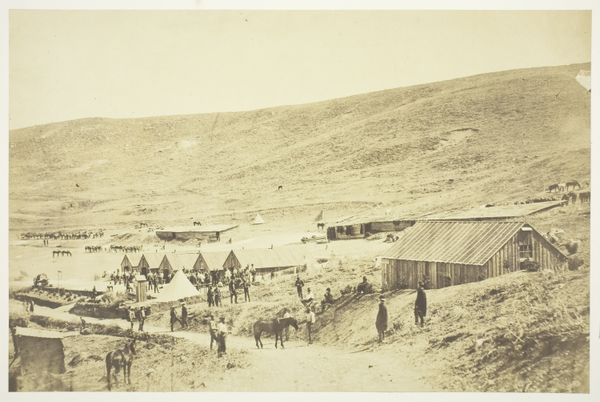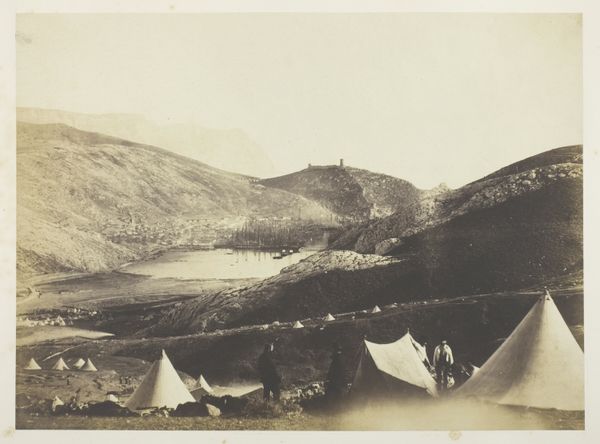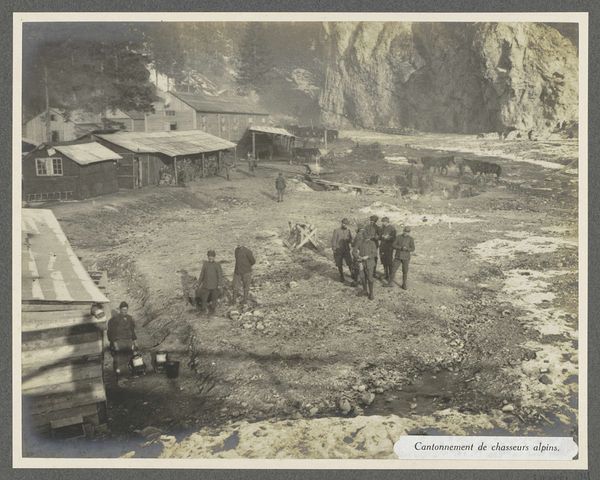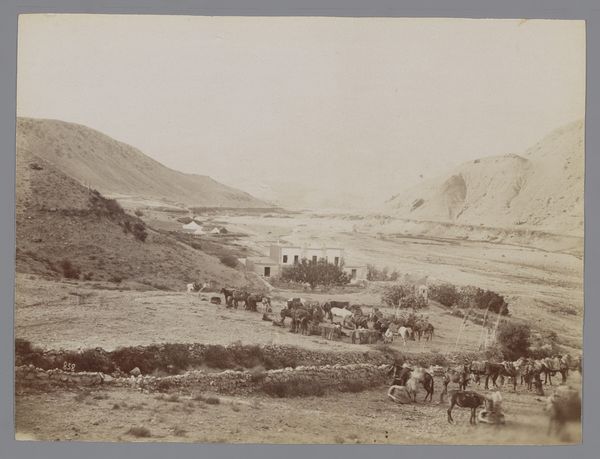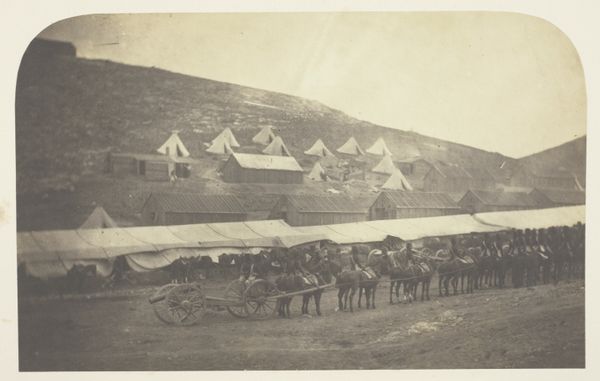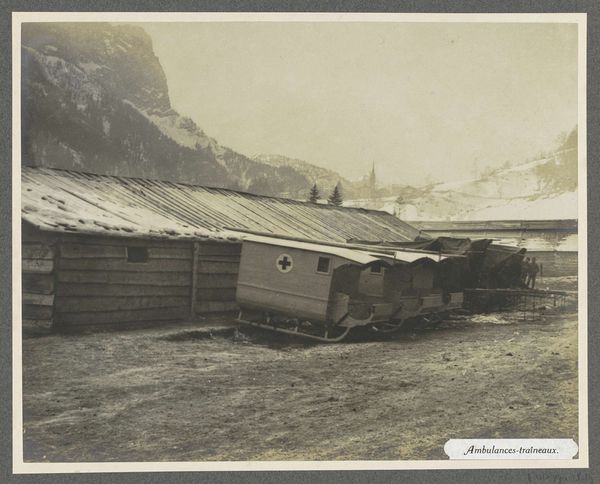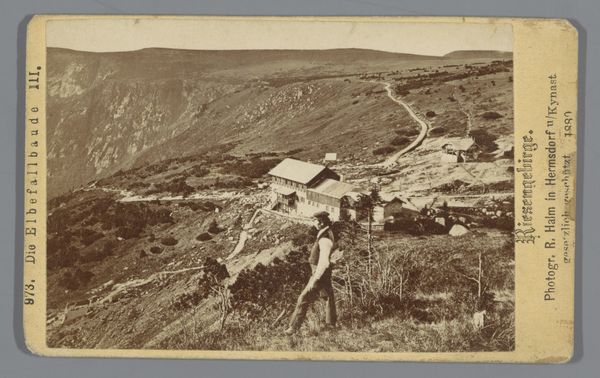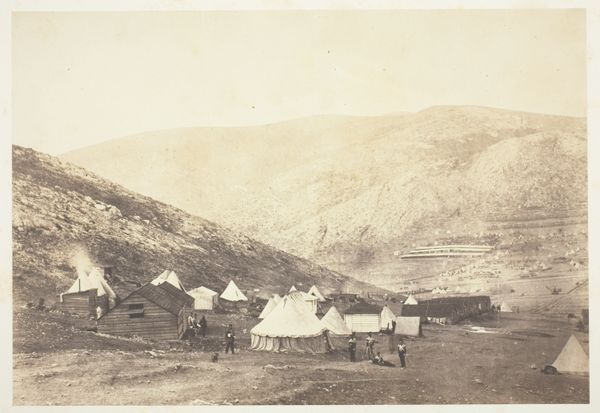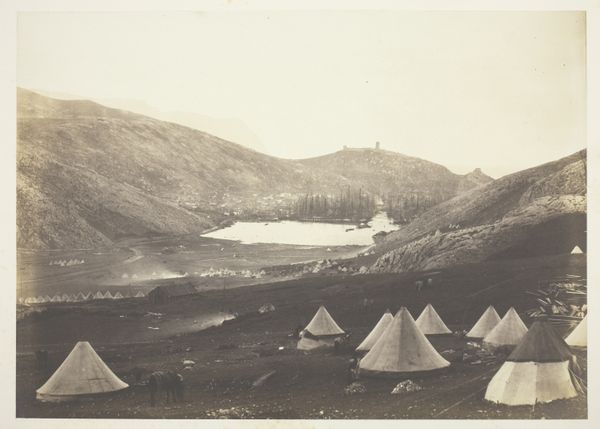
Gezelschap met Keizer Wilhelm II tegen de achtergrond van de Buarbrae in Noorwegen 1889
0:00
0:00
Dimensions: height 79 mm, width 110 mm, height 314 mm, width 450 mm
Copyright: Rijks Museum: Open Domain
Curator: What a perfectly still moment captured in time! Editor: Indeed! What are we observing? Curator: This gelatin-silver print by Paul Güssfeldt, taken in 1889, is called "Gezelschap met Keizer Wilhelm II tegen de achtergrond van de Buarbrae in Noorwegen"—or, "Company with Emperor Wilhelm II against the backdrop of the Buarbrae in Norway". Editor: It's so quiet, and feels oddly staged—the frozen glacier backdrop looming over these tiny figures feels...almost like an imperial stage set. What can you tell me about Wilhelm’s travels here? Curator: Well, Kaiser Wilhelm II of Germany frequently visited Norway. He was quite fond of the fjords and dramatic landscapes. He used to summer cruise with his yacht there regularly, almost annually in fact. Editor: Knowing his militaristic aspirations makes this scene read rather differently. It’s a beautiful landscape but, thinking of it as the Kaiser's holiday snapshot is… chilling. And not in the refreshing fjord kind of way. Curator: Right? Like this incredibly fragile environment being co-opted to project this… sense of powerful, untouchable dominion? It does sit uncomfortably once you bring the geopolitical context into it. Editor: There's an assumed power dynamic—the entitlement of claiming such raw nature as backdrop, as *his* vista. We see it from a great distance in this particular work, with an impressive glacier behind him in a remote region of Norway. It speaks to the problematic dimensions within even idyllic escapes. Curator: I do appreciate Güssfeldt for subtly hinting at that power imbalance, wouldn’t you agree? This photograph is so matter-of-factly presented, and with time becomes… a very layered, even charged scene, doesn’t it? Editor: Absolutely. This work opens an avenue for discussion. How historical power manifests in landscape, influencing even our seemingly innocent aesthetic appreciations. Curator: Thank you for contextualizing this work for me. Now I am never going to look at an 1880’s landscape photo again!
Comments
No comments
Be the first to comment and join the conversation on the ultimate creative platform.
